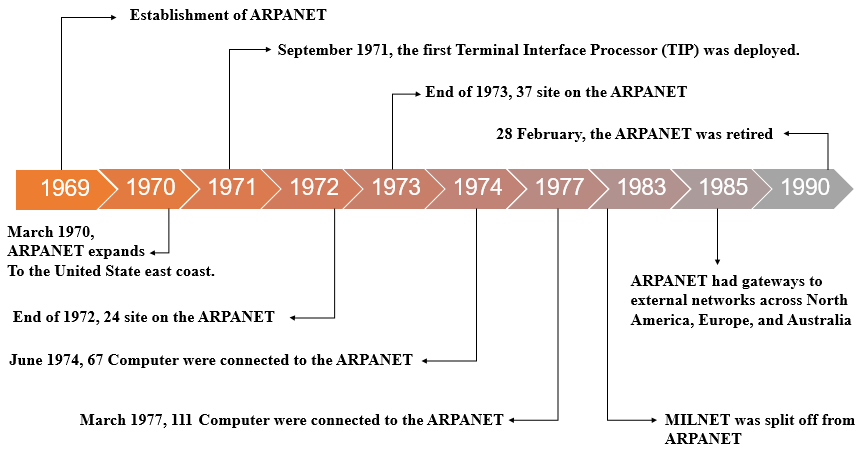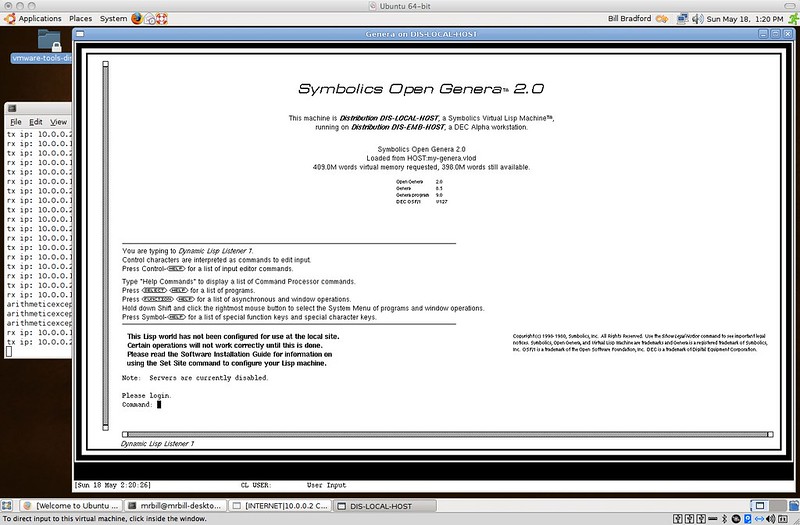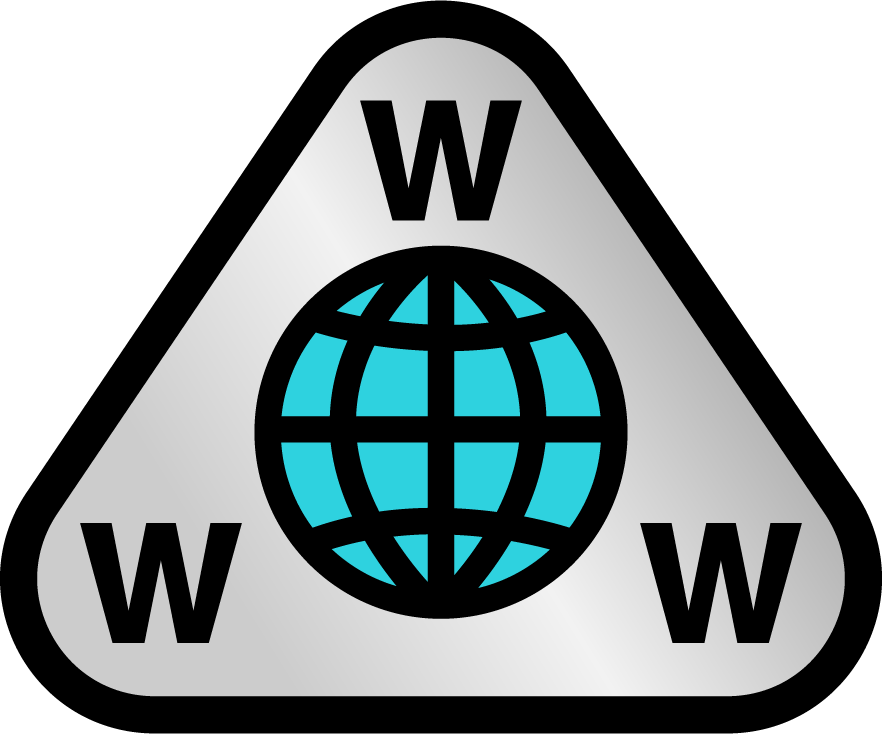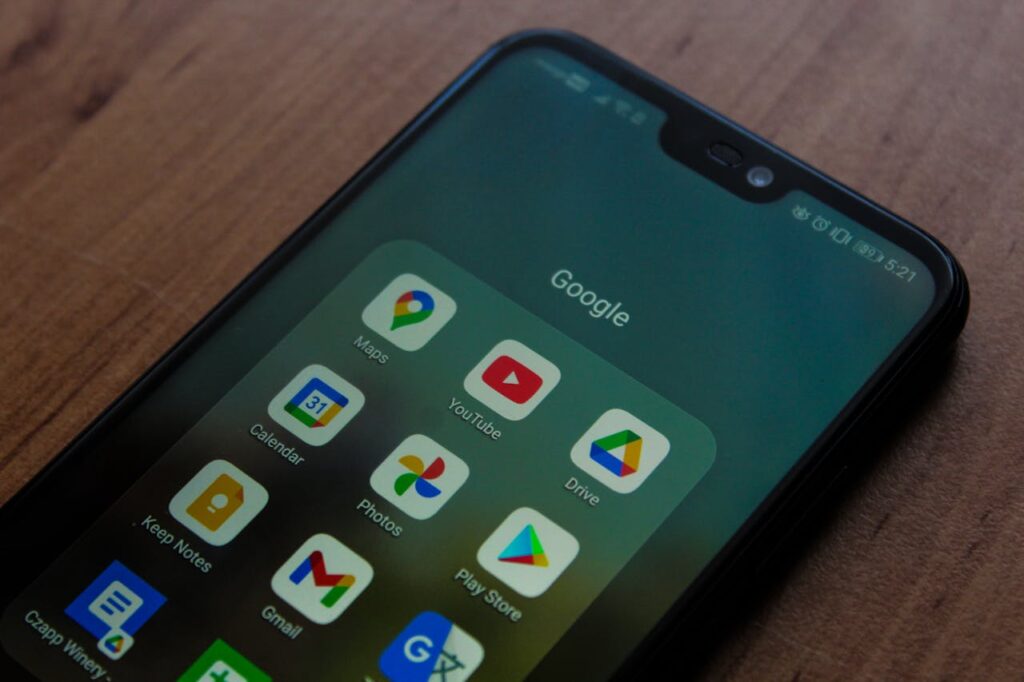The internet has become an indispensable part of our daily lives, but its history is filled with intriguing milestones and little-known facts. From its early beginnings as a government project to the global network we rely on today, the journey of the internet is a fascinating tale of innovation and collaboration. In this article, we delve into some lesser-known aspects of the internet’s history that highlight its remarkable evolution.
The ARPANET Origins

The internet’s predecessor, ARPANET, was developed in the late 1960s by the Advanced Research Projects Agency (ARPA) of the U.S. Department of Defense. ARPANET was the first network to implement the TCP/IP protocol suite, which became the foundation for the modern internet. The primary aim was to enable resource sharing and communication between computers at different universities and research institutions, laying the groundwork for the interconnected world we know today.
The First Message Sent

The first message ever sent over the ARPANET was “LO,” intended to be “LOGIN.” On October 29, 1969, computer scientist Leonard Kleinrock and his team at UCLA tried to send the message to Stanford Research Institute. However, the system crashed after transmitting the first two letters. This simple, incomplete message marked the beginning of digital communication.
The Birth of Email

Email was invented in 1971 by Ray Tomlinson, who used the @ symbol to designate email addresses within ARPANET. Tomlinson’s innovation allowed users to send messages to specific individuals rather than broadcasting to an entire network. This breakthrough transformed communication by introducing a fast, reliable method of exchanging information.
The First Website

The world’s first website was created by Tim Berners-Lee in 1991 at CERN, the European Organization for Nuclear Research. The site, which provided information about the World Wide Web project, was hosted on Berners-Lee’s NeXT computer and included an explanation of hypertext, instructions for creating web pages, and links to other web resources. This pioneering site laid the foundation for the web as a platform for sharing information.
The First Domain Name

The first domain name ever registered was Symbolics.com on March 15, 1985, by the Symbolics Computer Corporation. This milestone marked the beginning of the Domain Name System (DNS), which translates human-friendly domain names into IP addresses, making it easier for users to navigate the internet.
The Invention of the World Wide Web

Tim Berners-Lee invented the World Wide Web in 1989, introducing the concepts of HTML, URL, and HTTP. This invention revolutionized how information was accessed and shared online, transforming the internet from a text-based system into a multimedia-rich environment. The web’s ease of use and accessibility played a significant role in the internet’s rapid expansion.
The Mosaic Browser

Released in 1993, Mosaic was the first widely used web browser, developed by Marc Andreessen and Eric Bina at the National Center for Supercomputing Applications (NCSA). Mosaic’s graphical user interface and support for multimedia elements made the web more accessible and attractive to the general public, accelerating the internet’s growth.
The Introduction of Search Engines

Archie, created in 1990, was the first search engine, designed to index FTP archives and make it easier to find specific files. This was followed by Gopher, WAIS, and eventually more sophisticated search engines like Yahoo! and Google. These tools transformed how users navigated the web, making it easier to find information and driving the proliferation of online content.
The Dot-Com Boom and Bust

The late 1990s saw the rise of the dot-com boom, a period of rapid growth and investment in internet-based companies. Many startups with “.com” domains received substantial funding, often without viable business models. The bubble burst in 2000, leading to significant financial losses and the collapse of many internet companies. However, this period also laid the groundwork for the success of future tech giants.
The Rise of Social Media

The early 2000s saw the emergence of social media platforms like Friendster, MySpace, and eventually Facebook, which launched in 2004. These platforms revolutionized how people connect and interact online, creating new opportunities for communication, content sharing, and community building. Social media has since become a central part of internet culture.
The Evolution of E-Commerce

The launch of Amazon in 1995 and eBay in 1995 marked the beginning of e-commerce. These platforms transformed retail by enabling consumers to shop online and purchase a wide variety of goods from the comfort of their homes. E-commerce has since grown exponentially, becoming a multi-trillion-dollar industry that continues to evolve with advances in technology and logistics.
The Introduction of Broadband

The transition from dial-up to broadband internet in the early 2000s marked a significant improvement in connection speeds and reliability. Broadband technology, such as DSL, cable, and fiber-optic, provided faster and more consistent internet access, enabling the rise of high-bandwidth applications like video streaming, online gaming, and cloud computing.
The Creation of Wi-Fi

Wi-Fi technology, based on the IEEE 802.11 standards, was introduced in the late 1990s and early 2000s. It enabled wireless internet access, freeing users from the constraints of wired connections. Wi-Fi has since become ubiquitous, allowing devices to connect to the internet wirelessly in homes, businesses, and public spaces worldwide.
The Impact of Mobile Internet

The advent of smartphones and mobile internet in the late 2000s revolutionized how people access and use the internet. Devices like the iPhone, launched in 2007, brought powerful computing capabilities and internet access to the palm of users’ hands. Mobile internet has become an essential part of daily life, driving the development of apps and services tailored for on-the-go use.
The Emergence of Cloud Computing

Cloud computing emerged in the early 2000s, offering scalable and flexible computing resources over the internet. Services like Amazon Web Services (AWS), launched in 2006, provided businesses with on-demand access to storage, processing power, and other resources. Cloud computing has transformed IT infrastructure, enabling new business models and innovations.
The Development of Web 2.0

The term “Web 2.0” describes the evolution of the web from static, read-only pages to dynamic, interactive platforms. This shift, which began in the mid-2000s, emphasized user-generated content, social networking, and collaboration. Web 2.0 technologies, such as AJAX and APIs, enabled the creation of rich, interactive web applications that have reshaped online experiences.
The Growth of Online Video

The launch of YouTube in 2005 marked a turning point for online video content. YouTube’s platform made it easy for users to upload, share, and view videos, leading to the rise of user-generated content and the popularity of video blogs (vlogs). Online video has since become a dominant form of digital media, influencing entertainment, education, and marketing.
The Advent of Streaming Services

The rise of streaming services like Netflix, which transitioned from DVD rentals to streaming in 2007, revolutionized how people consume media. Streaming technology allows users to access a vast library of content on demand, without the need for physical media. This shift has disrupted traditional media industries and changed viewing habits.
The Role of Open Source

Open-source software has played a crucial role in the development of the internet. Projects like the Apache HTTP Server, Linux operating system, and the Mozilla Firefox browser have provided free, collaborative solutions that drive innovation. The open-source model encourages community contributions and has led to the creation of many foundational technologies used on the internet today.
The Internet of Things (IoT)

The concept of the Internet of Things (IoT) involves connecting everyday objects to the internet, allowing them to collect and exchange data. IoT has grown rapidly in recent years, with applications ranging from smart homes and wearable devices to industrial automation and smart cities. This interconnected ecosystem promises to enhance efficiency, convenience, and quality of life, but also raises concerns about security and privacy.
This article originally appeared on UnifyCosmos.
More from UnifyCosmos
22 Ways To Avoid Being Broke on a High Salary

This article will explore practical strategies to help you avoid being broke even when you have a substantial paycheck. By following these tips, you can ensure a more stable and secure financial future. Read more!
18 Practical Tips for Staying Organized at Home

With a few practical tips, you can keep your space tidy and stress-free. Simple changes can make a big difference in your daily routine. Start small, and soon you’ll see a more organized home. Read more!
18 Essential Tips for Saving Money While Traveling

From choosing affordable accommodations to finding local deals, small changes can make a big difference. These tips will help you make the most of your trip without breaking the bank. Read more!
Leave a Reply